The Toughest Water in Wyoming
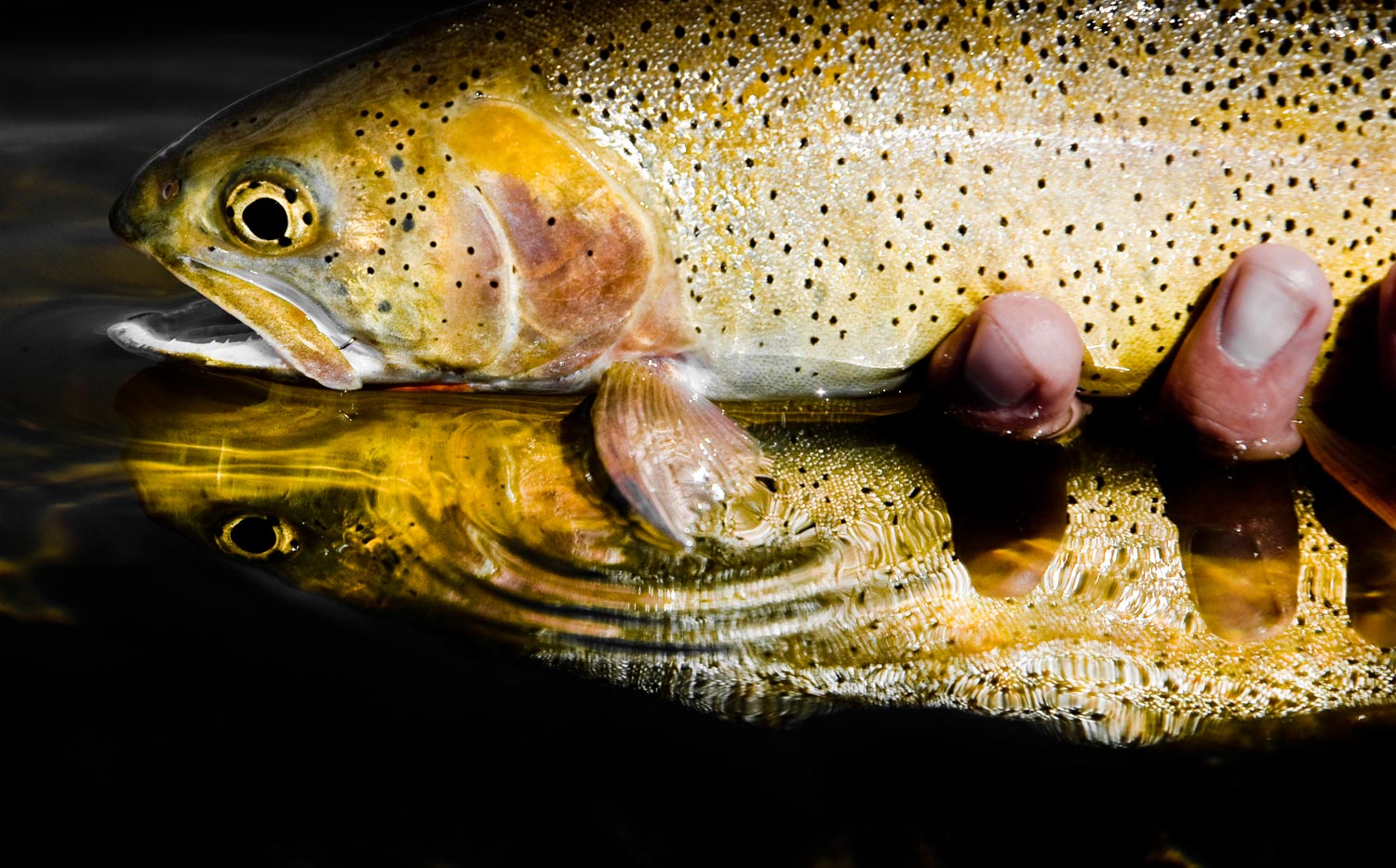
“HOW WAS YOUR DAY?” ASKED THE GUY AT THE FLY SHOP COUNTER.
“WELL,” I ANSWERED, “I FISHED THE TOUGHEST WATER IN WYOMING.”
Everyone rolled their eyes. This was exactly the response I expected. Working at a fly shop in Jackson hole, I imagine, you get to listen to more than a few boastful dumb asses. When I told them where I’d spent the day, they all laughed and agreed, I’d fished the toughest water in Wyoming. See if you can figure out what happened?
Read More »Unhook Thyself! Safe, Painless Hook Removal
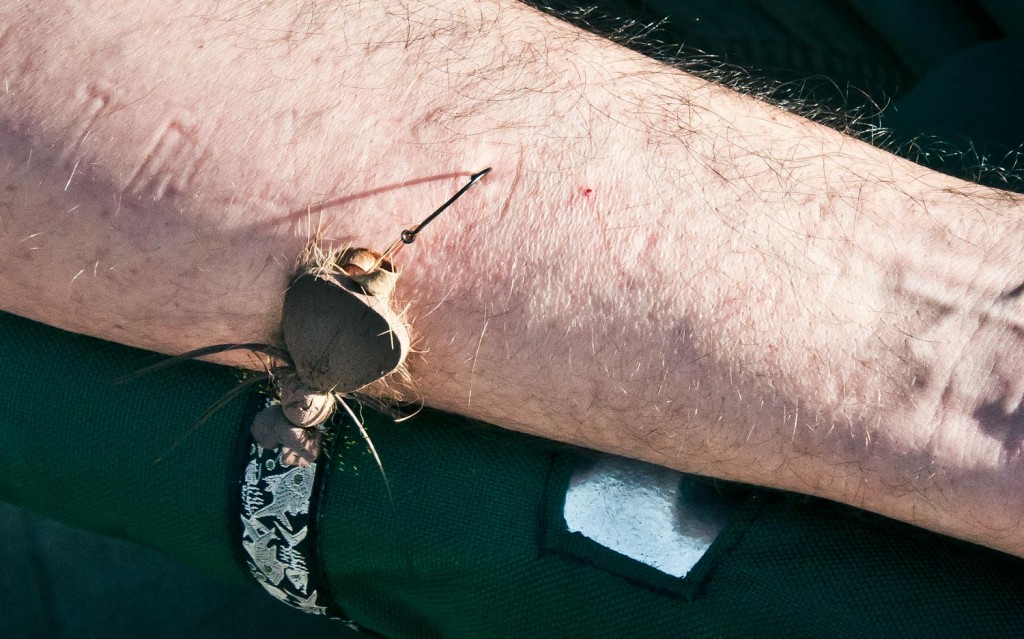
IF YOU’VE BEEN THINKING, “I LOVE GINK AND GASOLINE BUT I WISH IT COULD BE MORE LIKE JACKASS”, THEN TODAY IS THE DAY YOUR DREAMS COME TRUE!
There are two kinds of fishermen. The ones who have hooked themselves and the ones who are about to. It’s a bad feeling the first time you put a big streamer hook in yourself past the barb. You feel pretty helpless if you don’t know how to handle it. I’ve done it many times and I’m here to tell you that there is an easy, and even painless, way to get that hook out. As a veteran guide Kent has had to do it plenty and he’s a master. He’s taken hooks out of clients without them even knowing it was done.
We’ve been wanting to do this video for some time. We kept waiting for one of us to get hooked but it hasn’t happened so on a recent float on the South Holston with the guys from Southern Culture on the Fly and Bent Rod Media I decided to take things in hand and hook myself so we could show you how to deal with it. I have to say, it was harder to get that hook in past the barb than I thought. If you listen closely you can hear Dave Grossman of SCOF almost lose his lunch.
So watch and learn and please,
Read More »Build Your Own Fly Rod: DIY Video 4
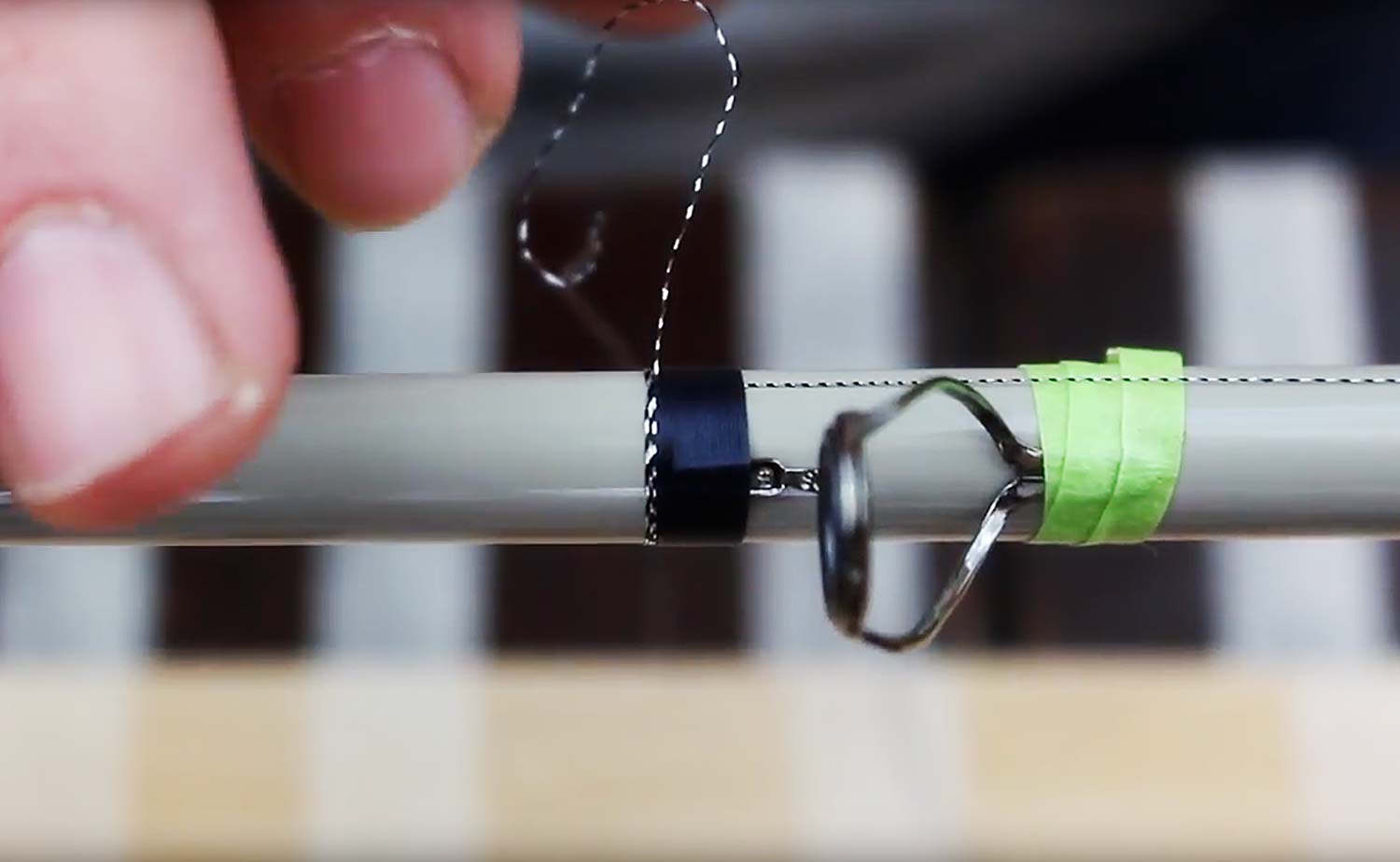
It’s rod building time with Matt Draft of Proof Fly Fishing.
In this installment, video 4, Matt will cover wrapping the ferrules, stripping guide and hook keeper. In addition to the basics Matt will share some pro tips for the trickier steps in the process. Our DIY rod is really starting to look like something now!
Check out Matt’s site, Proof Fly Fishing. As a special thank you to G&G readers, Matt will be offering free shipping on all of his kits for the next seven weeks. Just use the code G&Gfreeship on his web site.
BUILD YOUR OWN FLY ROD: DIY VIDEO 4: WRAPPING THE FERRULES, STRIPPING GUIDE AND HOOK KEEPER.
Read More »Spey Casting, The Sweep
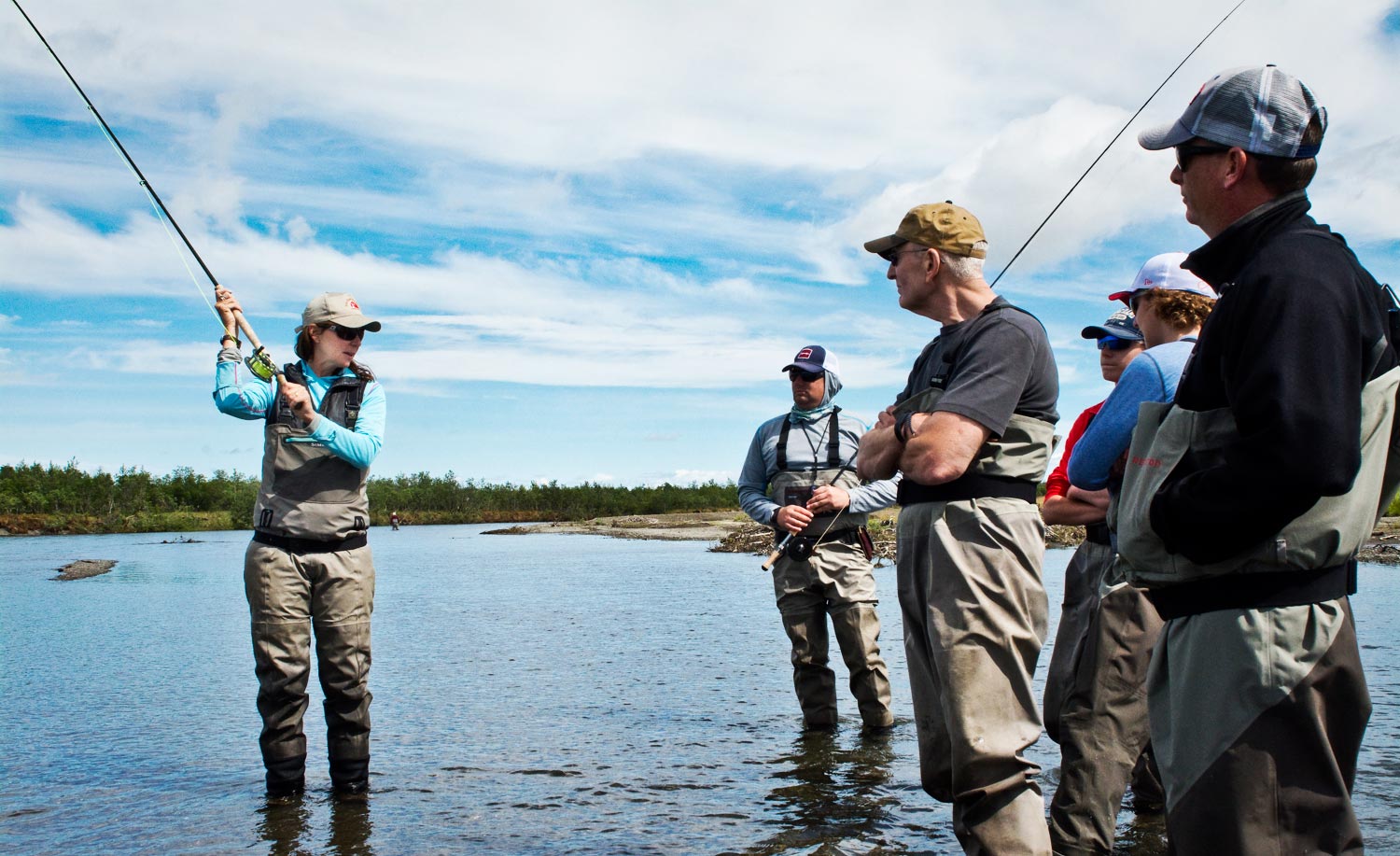
Tired, lost, in a funk, something amiss about your spey cast?
When my fishing is dissolving into a casting malfunction and in frustration an early start to cocktail hour seems like a good idea; I just tell myself, lift, sweep, set, circle up and pull to the target. Repeating it to myself helps me to regain my focus and calm.
It’s a recipe that when put together in sequence creates a spey cast. Here is my attempt to follow Deneki’s blog post “The Lift” from February 12, 2015.
INTRODUCING THE SWEEP:
A good sweep is an intricate feature to a well performed cast. In the casting sequence it comes after the lift. As pointed out in Deneki’s post “The Lift”, it sets the ground work for an efficient sweep of the fly line, allowing the fly to set at the proper anchor point. The anchor adheres the front end of the fly line and leader to the water’s surface.
With the aide of the anchor the back loop is fully formed during the sweep to the Key position, the position prior to the forward cast. The back loop is formed 180 degrees from the intended target and parallel to the caster. In a spey cast, without an anchor we don’t have a back loop. A good sweep repositions the line from the top of the lift to the anchor. In all spey cast and styles we sweep to the anchor.
FUNDAMENTALS OF A SWEEP:
Start with the rod canted at a 35 degree angle
Read More »Improve Your Casting With A Dog

A good dog can help you catch more fish.
Most anglers never pick up a fly rod, other than to fish, but making time for consistent and effective casting practice makes a huge difference in your performance on the water. Even anglers who understand this, struggle to make it happen. We don’t get the same pleasure from practice as we do from fishing. None of us started fly fishing because we liked hanging out in the yard.
So here’s an idea to make your practice time more enjoyable and more productive. Take a dog. I’ve been doing this lately and discovered something I didn’t expect. Bear, the Great Pyrenees pictured above, has been living with us while his real mon is having cancer treatment. Like all dogs, Bear needs plenty of time outside. There’s a great park just down the street so I take Bear on regular missions.
So immediately I’ve cleared the biggest hurdle on the road to regular practice.
Making the time. Bear makes sure that I make the time. Like most dogs he wants to sniff every blade of grass in the park. I started taking a rod and some targets to pass the time. Bear gets some relaxed play time and I get my practice in. Everybody wins.
Casting to targets is OK practice for some fishing situations. It does give you the chance to focus on the fundamentals of the cast and improve loop control and accuracy. But as I’ve written before, it does not help you develop good target picture, an important skill in any sight fishing scenario. As I was practicing one afternoon, I noticed something about Bear. His sniffing reminded me of something. He’d get on a scent and root around following it, a lot like a bonefish will do when hunting on a flat.
I started making presentations to Bear. He’d
Read More »Chard’s Snapping Shrimp
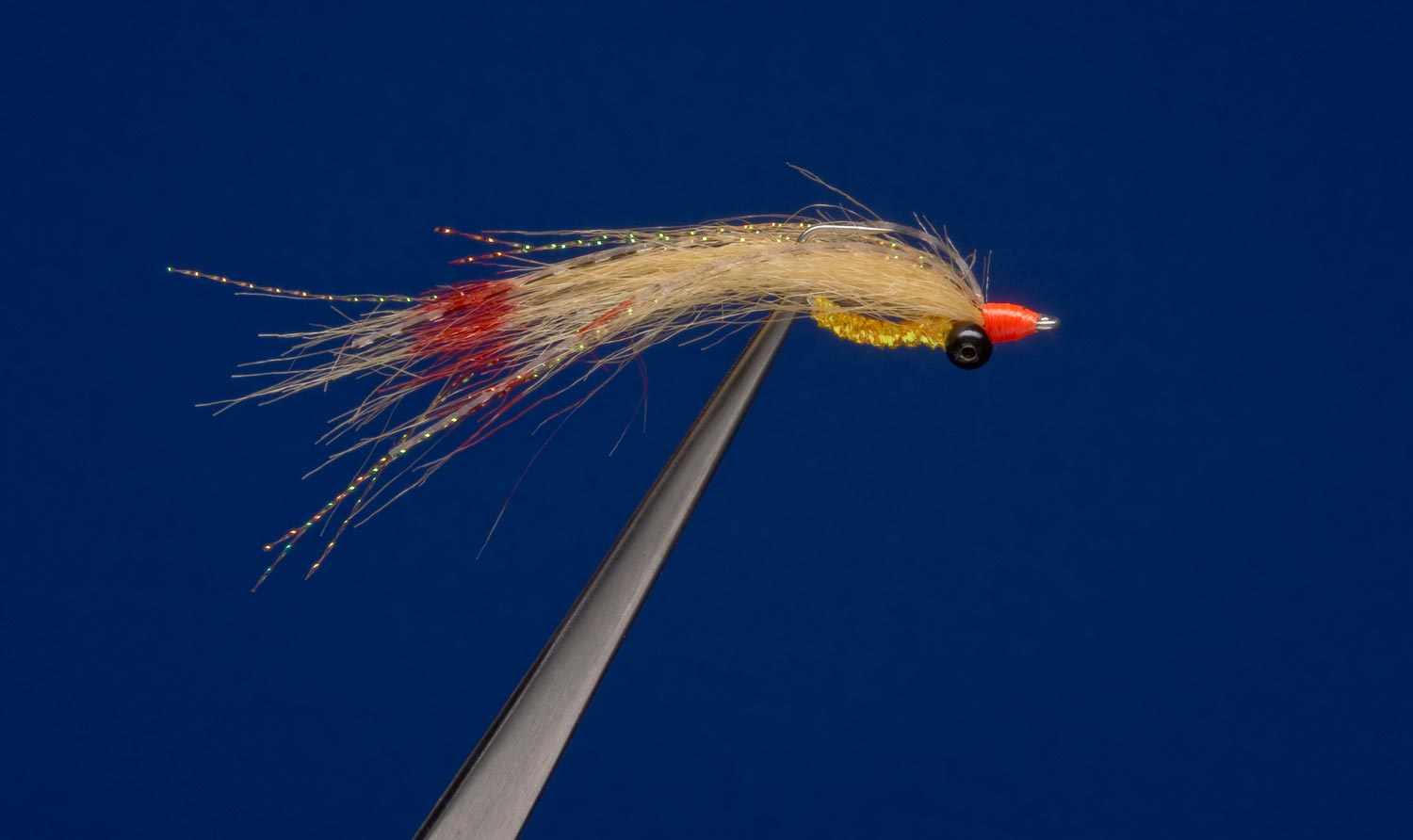
IT’S TIME TO GO TO THE BAHAMAS AND CATCH BONEFISH!
Seriously, I’m going to the Bahamas tomorrow morning for the first week of the G&G Andros South bonefish trip. I can’t wait. And in the box of flies I’m taking along there is a healthy handful of Bruce Chard’s Snapping Shrimp patterns.
This is one of the first bonefish flies I learned to tie and it’s a s productive now as it was then. It’s a versatile little fly that takes almost no time to tie and catches bonefish on any flat in the Bahamas. And plenty of other places I’m sure.
It may be too late for you to go to South Andros with me tomorrow, but it’s not too late to tie some Snapping Shrimp for your next trip.
Watch the video and learn to tie Chard’s Snapping Shrimp.
Read More »5 Tips for Beating Out the Winter Cold on the Water
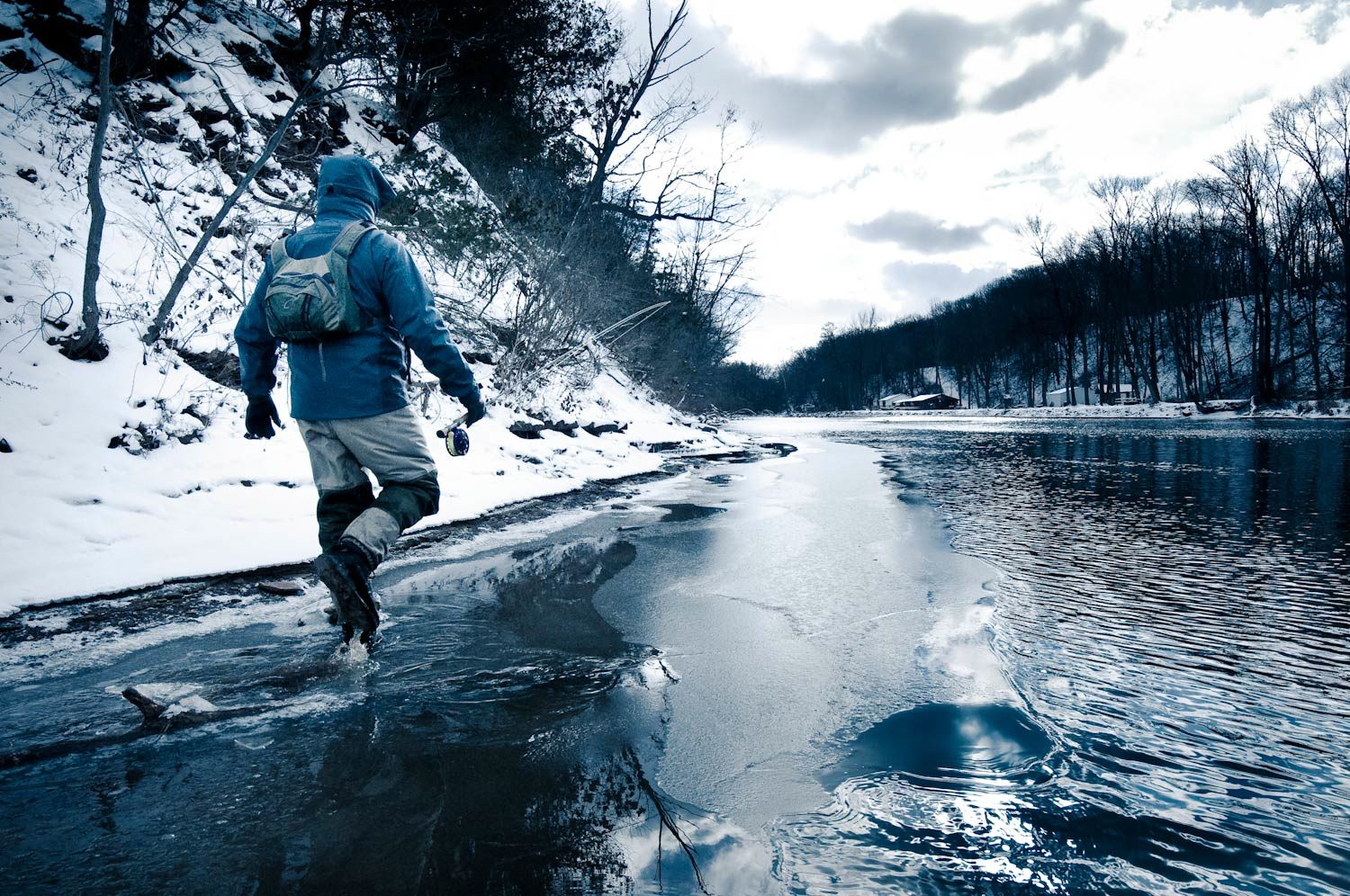
I’ll be the first to tell you that I’m past the days of heading out into Arctic conditions to fly fish unless I’m outfitted properly. Call me a wuss or nancy, that’s fine with me, I don’t care how big the fish are, you can catch them. I’ve been miserable too many times over the years and I refuse to put myself in that position anymore. If I’m unable to enjoy myself wetting a line, there’s absolutely no reason for me to be out there. Furthermore I’ve had some really close calls with frostbite in the past, and frostbite is scary stuff folks.
Read More »Prolong the Life of Your Leaders with Tippet Rings
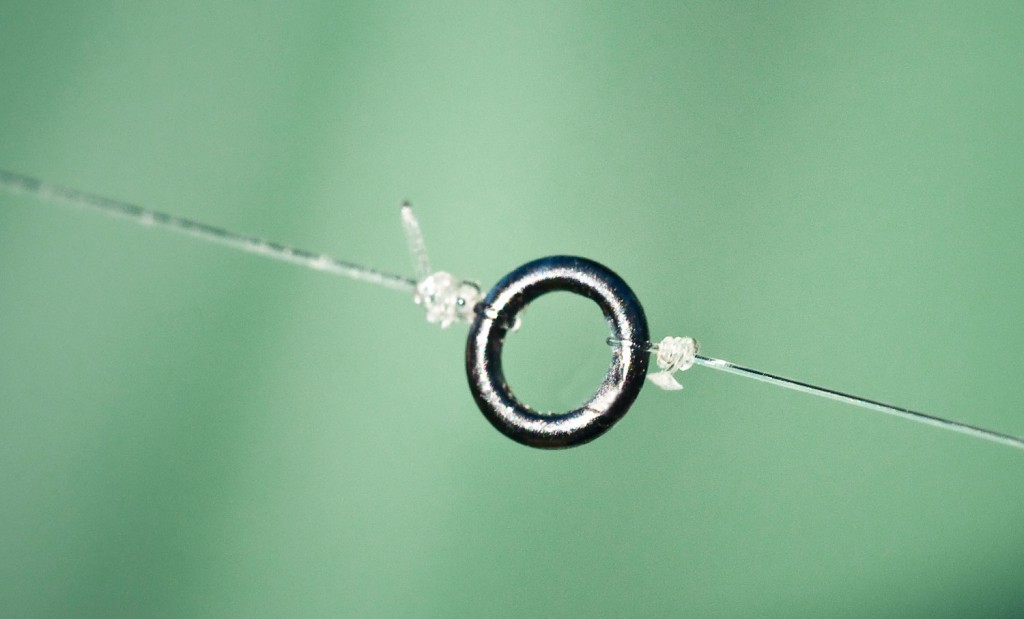
Leaders have got quite expensive over the past couple decades.
Recently, I saw a pack of two fluorocarbon leaders retail for $20.00 in a fly shop. That’s a pretty good hit to the wallet if you get out on the water to fly fish regularly. One way you can prolong the life of your leaders is to use tippet rings. The tippet ring takes the leader out of the equation by providing the angler a reusable anchor point to tie on tippet and attach flies. Climax manufactures and sells tippet rings and although I don’t like using them for my dry fly fishing because they can create micro-drag, they work very well for nymph fishing.
Tippet Ring Rigging Instructions
What I like to do is take a 7 1/2′ tapered 2X or 3X leader and tie the end directly to the loop ring. I then tie 24-30″ of 4X-6x tippet to the other side of the loop rig and tie on my tandem nymph rig. This keeps me from having to cut into my leader when I’m changing out flies or if I break off on a snag fishing. The tippet rings are also very nice for anglers that struggle with their eye sight up close, and makes it very easy
Tandem Tactics for Trout. Part One: Touching The Surface
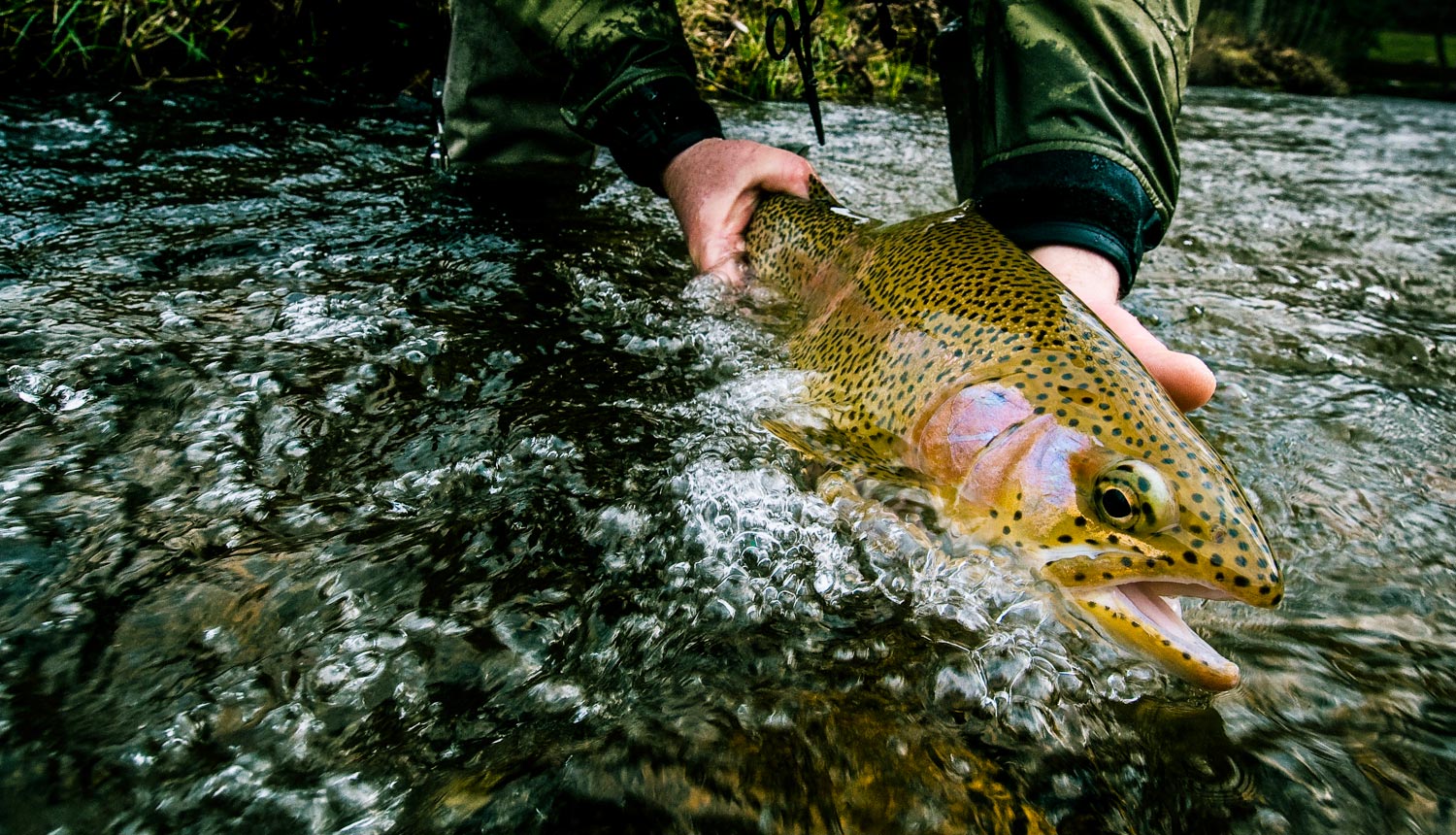
FOR A WHOLE LOT OF REASONS, TWO FLIES ARE BETTER THAN ONE.
There’s nothing new about fishing teams of flies. European fly anglers have fished elaborate multi-fly systems, called casts, for generations. Most serious trout anglers here in the US regularly fish two or three flies, where regulations allow. Still, there are many anglers who resist this technique. These anglers are often intimidated by casting a team of flies and, perhaps more often, just not sure what to tie on.
Nymph rigs, with split shot and indicators, are a challenge to cast but the second fly is really not the problem. When the setup tangles, the split shot is generally the culprit. If you are comfortable casting split shot, you will likely not have trouble with the extra fly but if you are still concerned, consider replacing that split shot with a weighted nymph. A tungsten bead or some lead on the hook shank can sink your setup as effectively as shot and may catch a fish.
My nymph rigs almost always include two or three nymphs and at least one split shot. Yes, like everyone else who owns a fly rod, I occasionally get a tangle. I’m pretty good at getting them out and adhere strictly to the two minute rule. If it’s going to take more than two minutes to untangle, I cut my flies off and re-tie.
There are a couple of things you can do to reduce tangling with weighted set ups. Tangles usually result from slack in the system. Slow your cast down and focus on making nice clean loops. The smooth application of power and abrupt stop are never more important. In truth, most tangles do not form in the cast itself but are due to a failure to control your line while not casting. Fish often help with this. Missing a fish on a small trout stream often ends in tree climbing. Be conscious of you rig as you move from spot to spot and set up to cast. This will cut out a lot of the birds nests.
Dry Dropper rigs
The most commonly used team of flies is the dry dropper. There are two common strategic ways of looking at this technique. The first is
Consumer Surplus and Fly-Fishing
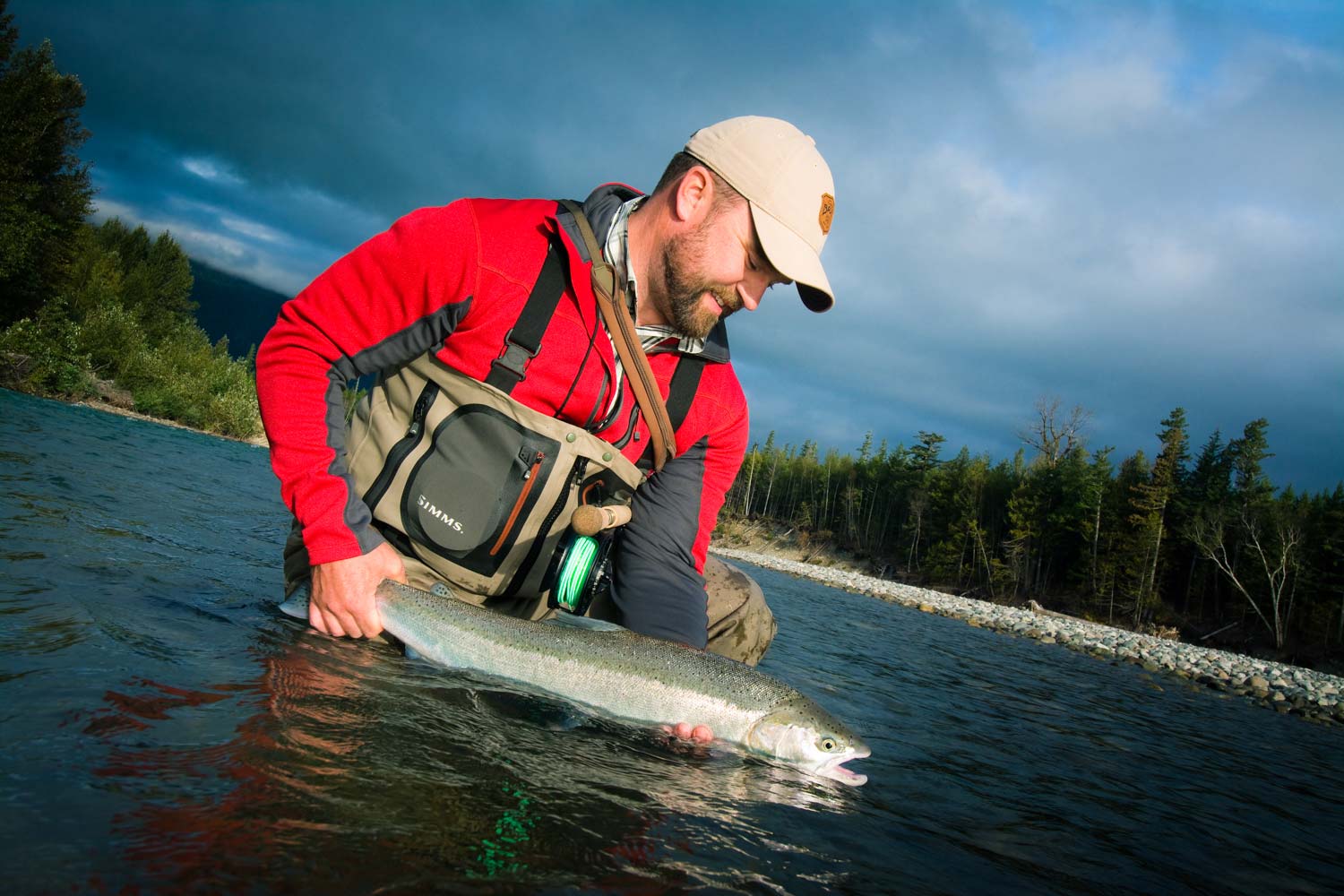
By Louis Cahill
What would I have to pay you to give up fly-fishing?
If you are not familiar with the term consumer surplus, don’t feel bad. It is, to my mind anyway, a pretty esoteric concept, but one which economists hold a lot of stock in. It’s a way of measuring the parts of our economy that can’t be measured. It’s the value of what you don’t pay for.
On one level it makes a lot of sense. An area that economists spend a lot of time evaluating is the digital economy. For example, a study was done to evaluate the consumer surplus of Facebook. If it could be determined what people would pay for Facebook, that figure would be the consumer surplus. That’s a hard value to asses, so they did the next best thing. They figured out what it would cost to get people not to use Facebook. They actually paid people to give it up for a month. The average cost of getting someone off of Facebook was $48 per month.
Personally, I have a lot of feelings about that. I quit Facebook about a year and a half ago. The account is still there and Justin Pickett posts on it for me but it’s been a year and a half since I looked at it. I would pay well over $48 per month to not see Facebook and I might be willing to pay others not to use it. If you are a Facebook user, I recommend giving it up. You’ll be happier, I promise. Ok, enough rant.
This got me thinking about the consumer surplus in fly fishing. What is the value of the things that we don’t pay for? Let’s start with Gink and Gasoline. Don’t worry, I’m not going to start charging you, but you’d be shocked how many times that idea has been pushed on me. You might be surprised to hear that I have turned down three offers to sell G&G, so I have some idea of what that figure might be, but what is it worth to you, the reader?
It’s worth a great deal to me. Not in dollars, but in my heart. That part of me is a little put off by some economist’s assertion that the digital efforts of my labor are simply part of some math equation bent on figuring my worth to the machine. Still, there is a dollar and cents value to what’s going on here and it isn’t cheap to run anymore. I’d like to point out that the bill is currently being paid by the awesome folks whose ads you see on the site. Also the folks who come on the hosted trips and the straight up heroes who contribute the content. That’s worth thinking about next time you hit the comment section.
So if we can put a value on the five minutes you waste every day, at work I assume, reading G&G, what about the time you actually spend fishing? Let’s use the same math as the Facebook study.
What would I have to pay you to give up fly-fishing?
Read More »